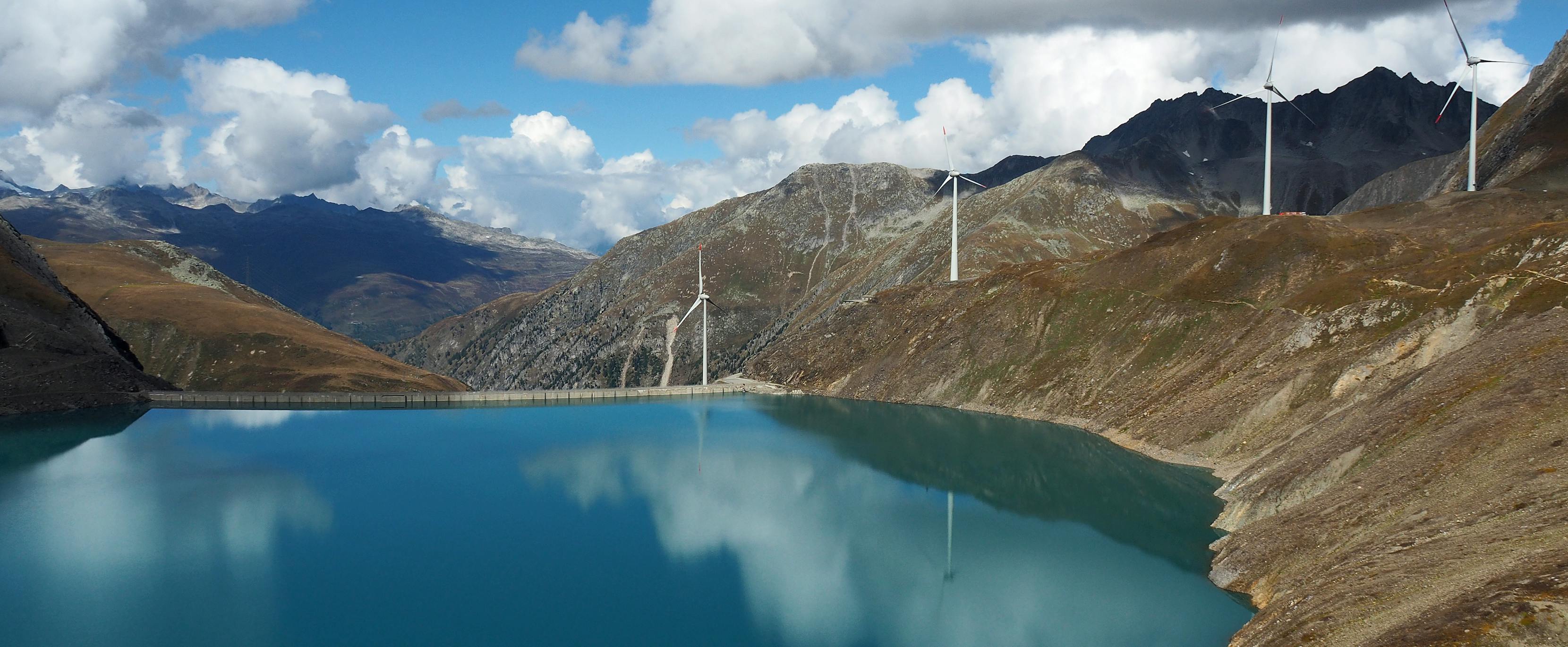
The use of renewable energies leads to an increasingly decentralised production of electricity, and not all regions have the same preconditions for producing power from renewable energy sources. Therefore, an appropriate infrastructure for the transport of electricity needs to be established.
The natural fluctuations in the production of electricity pose another challenge. Wind and hydropower or photovoltaics do not always supply sufficient electrical energy on demand, or they supply this energy at the wrong time.
However, if large amounts of excess energy could be stored over a long period of time, the fluctuating intensity of renewable energies could be productively utilised. Power-to-X technology is a promising storage option. It would also encourage sector coupling, which creates synergy effects between the electricity and heat supplies, as well as the transport sector.
The basic principle
«Power-to-X» refers to technologies that use excess electricity to split water into hydrogen and oxygen. Depending on the final application, the hydrogen is either used directly or to produce other sources of energy. In other words: if wind, solar or hydropower produce excess energy, this is used to produce gas, heat or fuel. Such resources can be stored over an extended period of time and can be converted to other end products later on if necessary.
Forward-looking technology
Power-to-X processes have the potential to contribute to the decarbonisation of energy systems. They could also be used to reduce the amount of fossil fuels used in the transport and chemicals sectors, as well as in traffic. However, power-to-X processes are still very expensive, and in most cases, they cannot be used on an industrial scale yet. More innovative and economical solutions are required to efficiently store, distribute and convert intermediate products. Once these are in place, power-to-X technologies will also be able to support flexible sector coupling, that is to say the networking of the electricity, heat and mobility energy sectors, which are currently still isolated to a large degree.







